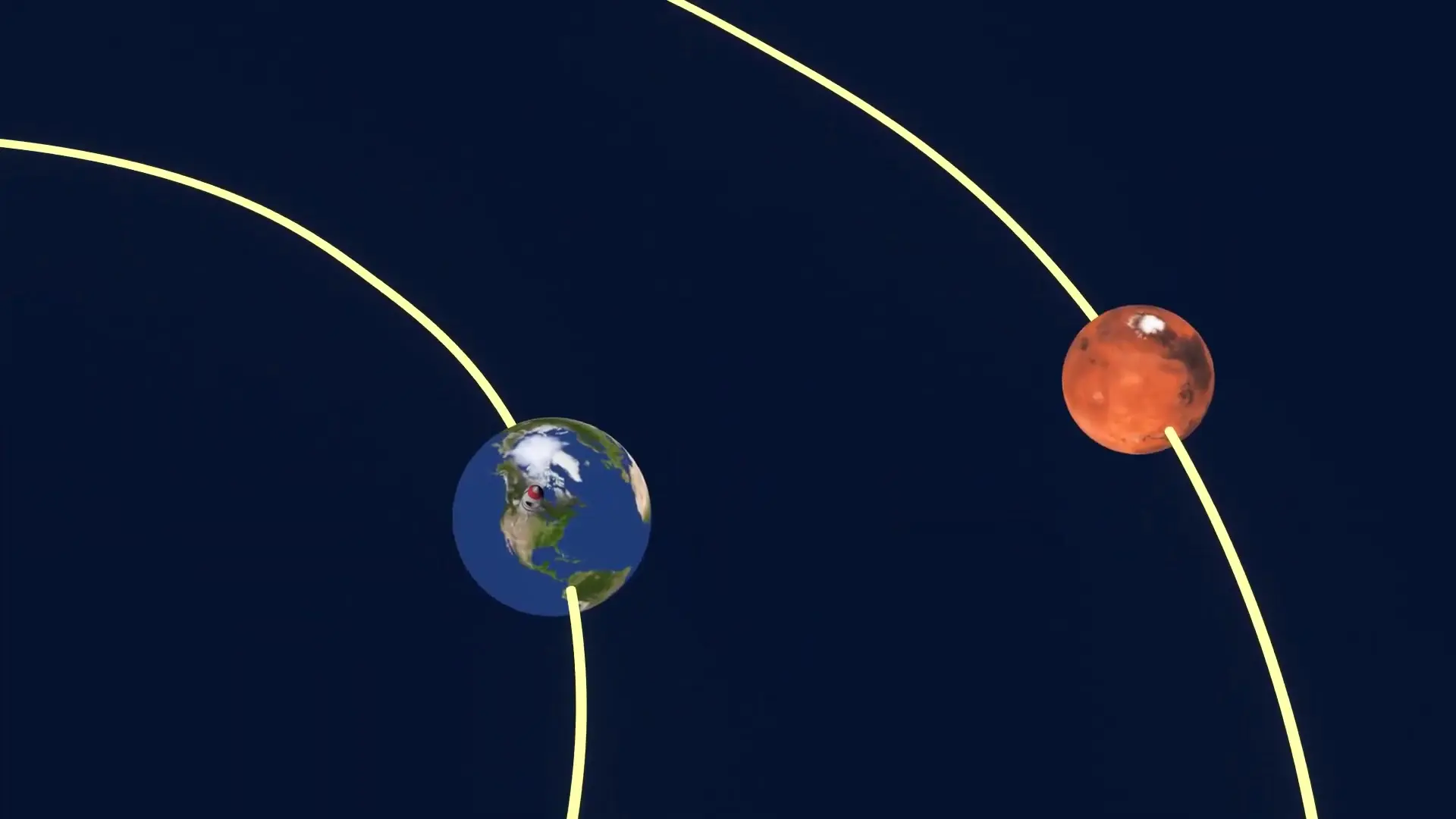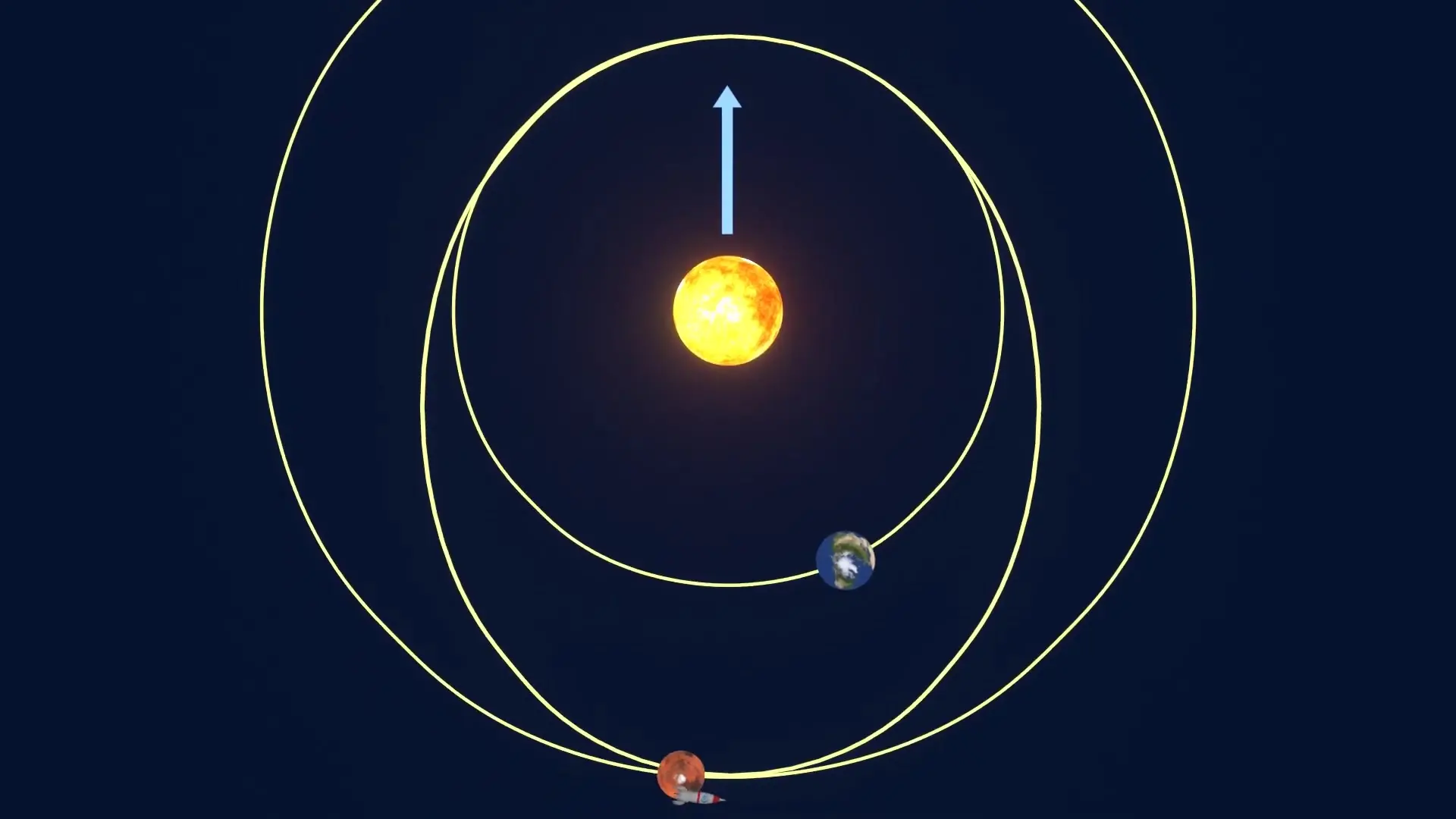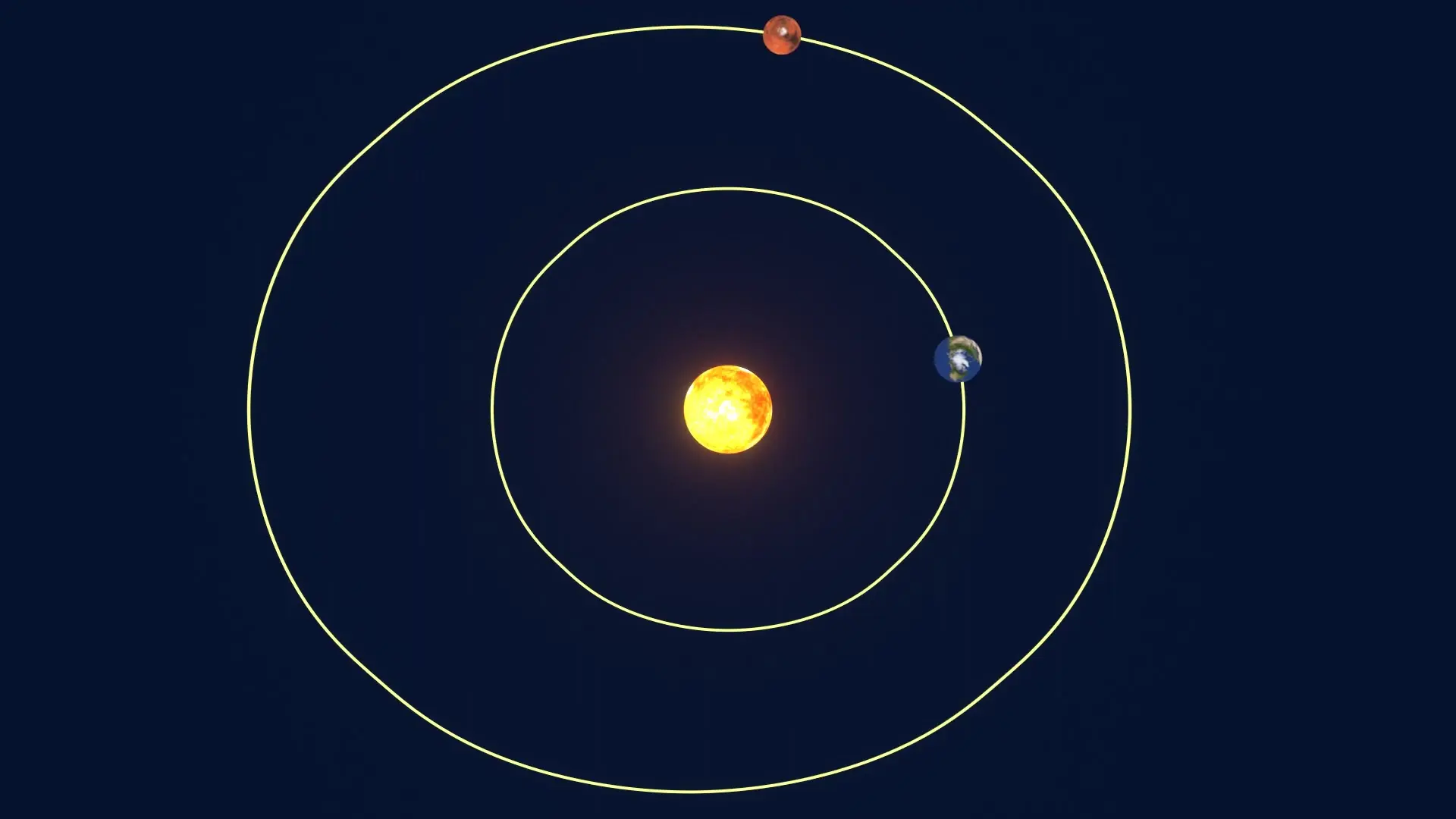
When planning a mission to Mars, timing isn't just important—it's everything. The concept of a Mars launch window is fundamental to understanding how and when spacecraft can travel between Earth and our red planetary neighbor. But what exactly is a launch window for Mars, how often does it occur, and how long does it last? This comprehensive guide explains the orbital mechanics that determine these crucial windows of opportunity.
Why Launch Windows to Mars Matter
Earth and Mars are constantly moving in their respective orbits around the Sun, with Earth completing a full orbit in approximately 365 days while Mars takes about 687 days. This difference in orbital periods means the distance between the two planets is continuously changing—sometimes they're relatively close, and other times they're on opposite sides of the Sun.

A common misconception is that the best time to launch a spacecraft to Mars is during opposition—when Earth and Mars are at their closest approach, with the Sun on the opposite side of Earth from Mars. While this might seem logical for minimizing travel distance, the reality of orbital mechanics makes this approach impractical.
How Often Does a Mars Launch Window Occur?
The launch window for Mars missions occurs approximately every 26 months. This frequency can be calculated by determining how long it takes Earth to complete one full orbit and then catch up to Mars in its slower orbit. The specific calculation reveals that it takes a little over two years (about 26 months) for Earth and Mars to align in positions favorable for spacecraft launches.
- Earth's orbital period: 365 days
- Mars' orbital period: 687 days
- Resulting launch window frequency: Approximately every 26 months
- Next launch window for Mars: Dependent on precise astronomical calculations for upcoming years
The Hohmann Transfer Orbit: The Key to Efficient Mars Travel
Rather than traveling in a straight line to Mars (which would be impossible given both planets' movement), spacecraft use what's called a Hohmann transfer orbit. This elliptical orbital path represents the most energy-efficient way to travel between two planets.

In a Hohmann transfer, the spacecraft starts on Earth's orbit, receives a propulsive boost to enter the transfer orbit, and then travels 180 degrees around the Sun. If timed correctly, the spacecraft will reach Mars' orbit just as Mars arrives at the same point. This approach prioritizes fuel efficiency over speed—a crucial consideration given the high cost and weight of rocket fuel.
How Long Does the Mars Launch Window Last?
The average length of a launch window to Mars is relatively brief—typically spanning just a few weeks. The exact duration varies based on factors like the mission's specific energy requirements, the spacecraft's capabilities, and the desired arrival trajectory at Mars. This limited timeframe creates significant pressure on mission planners, as missing a launch window means waiting approximately 26 months for the next opportunity.
- Mission planners must calculate the precise positions of Earth and Mars for optimal launch timing
- The spacecraft must launch when Earth is positioned to allow the transfer orbit to intercept Mars
- If the launch window is missed, the mission typically must wait for the next alignment in about 26 months
- The specific duration of each launch window varies based on mission parameters and energy constraints
Complications in Mars Mission Planning
While the basic concept of launch windows might seem straightforward, real-world mission planning is significantly more complex due to several factors that complicate the orbital mechanics:

- Non-circular orbits: Both Earth and Mars follow elliptical orbits rather than perfect circles, with Mars' orbit being more elliptical than Earth's
- Varying orbital speeds: Planets move faster when closer to the Sun and slower when farther away
- Orbital plane differences: Mars' orbit is inclined about 1.85 degrees relative to Earth's orbital plane
- Return trip planning: For round-trip missions, planners must account for launch windows from Mars back to Earth
The Launch Window for Return Trips from Mars to Earth
For missions planning to return to Earth, the same principles apply in reverse. After completing objectives on Mars, the spacecraft must wait for another launch window to open for the return journey. This means that missions to Mars with return capabilities must carefully time both the outbound and return trips, adding another layer of complexity to mission planning.
The launch window from Mars to Earth follows the same approximately 26-month cycle, but is offset from the Earth-to-Mars window. This means that missions typically need to stay on Mars for an extended period—often over a year—to wait for the proper alignment for the return journey.
Historical and Future Mars Launch Windows
Looking at the history of Mars exploration, we can observe how missions have consistently launched during these windows. For example, NASA's Perseverance rover launched during the 2020 window, while the Mars InSight lander used the 2018 window. Various space agencies and private companies carefully plan their missions to coincide with these predictable but infrequent opportunities.
Future Mars launch windows will continue to occur approximately every 26 months, with specific dates calculated based on the precise positions of the planets. Mission planners use sophisticated orbital mechanics calculations to determine the exact dates when the launch window for Mars will be open for each mission profile.
Conclusion: The Cosmic Dance of Interplanetary Travel
The science behind Mars launch windows demonstrates the intricate dance of celestial mechanics that governs interplanetary travel. While the basic concept—launch windows occurring approximately every 26 months—is relatively straightforward, the practical implementation involves complex calculations accounting for elliptical orbits, varying speeds, and orbital planes.
For mission planners, these windows represent both opportunity and constraint. They provide predictable opportunities for Mars exploration but impose strict timing requirements that can make or break a mission. Understanding these windows is crucial not just for current Mars exploration efforts, but for the future of human space exploration as we continue to push the boundaries of our reach into the solar system.
Let's Watch!
Mars Launch Windows: The 26-Month Cosmic Opportunity for Space Missions
Ready to enhance your neural network?
Access our quantum knowledge cores and upgrade your programming abilities.
Initialize Training Sequence